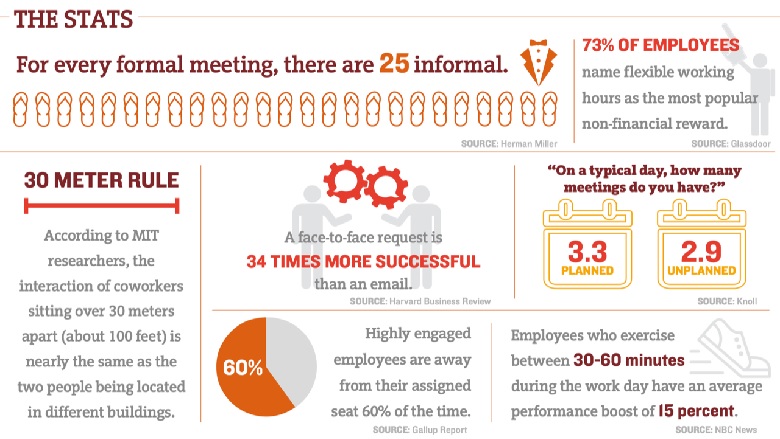A recent survey of corporate real estate professionals by Colliers and CoreNet Global suggests a marked trend toward smaller office workplaces, with roughly four in five respondents expecting to reduce their overall office footprint by 10 to 50 percent and planning to move up to half of traditional leases to flex leases within five years. Then, just after New Year’s came a spate of announcements from major corporate employers – Disney and Morgan Stanley, among others – that they would be requiring employees to return to work at least four days a week.
How should corporate leaders make real estate plans with these seemingly conflicting trend indicators? Sara Ross, a strategic design and planning consultant recently named principal with national workplace strategy expert Dyer Brown, puts it simply: there is no conflict.
“There are good reasons to bring employees back to near-full-time in-office work,” said Ross, director of Dyer Brown’s Corporate Services practice area, which focuses on helping enterprise clients improve the performance of their real estate portfolios. “Many employees are more productive in the office, and collaboration in-person can accelerate innovation. Plus, many report achieving a better work balance and feeling healthier and that it’s easier to separate work from other aspects of life.”
Ross sees the decisions made by Disney CEO Bob Iger, for example, as a reflection of Disney’s specific needs rather than a trend indicator. But, she noted, “what works for Disney may not work for your company.”

Photo courtesy of Dyer Brown
Dyer Brown’s national reputation for guiding corporations to effectively manage their real estate assets and align their portfolios with their larger organizational goals is based in an approach that works to develop a strategy based on each client company’s specific culture, workflow and needs while being mindful of actual trends — as opposed to media buzzwords. For corporate real estate executives wondering how to cut through the noise, Ross offers a few key points:
- Hybrid workforces do not automatically mean less square footage. “If there will be even one day a week when 100 percent of employees work in-person, then you need the same amount of workspace as if they all come into the office daily,” Ross said. Even a free-address model with a 3-to-2 ratio of employees to seats may only reduce required floor space by ten percent.
- Understand your workforce. Do you usually have a lot of new or first-time employees? Research shows that they may perform better if they work either 100 percent in-office or 100 percent at home, rather than in a hybrid model, Ross says. “Larger organizations also have to manage generational differences,” she said, pointing out that policies and procedures should cover a range of options as some workers may need more flexibility post-COVID.

Photo courtesy of Dyer Brown
- Align amenities with the larger strategy. Example: If there are only a few days a week with employees working in the office, that may not be a financially viable scenario for a full-service cafeteria. This could be a reason to shift to the four-days-a-week “sweet spot,” or alternatively to convert that cafeteria space into a flexible meet-up space.
- Get your HR team involved. On the front end, these are the folks who have their fingers on the pulse of your corporate culture and can offer critical insights. And once you’ve decided on a course change for workplace strategy, they will lead the critical change management effort.

Photo courtesy of Dyer Brown
With companies working to emerge from the pandemic with a stable real estate strategy that makes sense to everyone, shareholders included, Ross has noticed a shift in how her team is working with clients. Where before the pandemic Dyer Brown would just respond to stated requirements with recommendations and solutions based on the institutional knowledge, she says that now the firm is actively pitching strategy alternatives, offering ideas to executives and portfolio managers on how to think about their employees and space standards differently.
“Whether your organization is considering incremental or drastic change, both require updating your strategy – something that can’t be done successfully overnight,” Ross said.





Report Abusive Comment